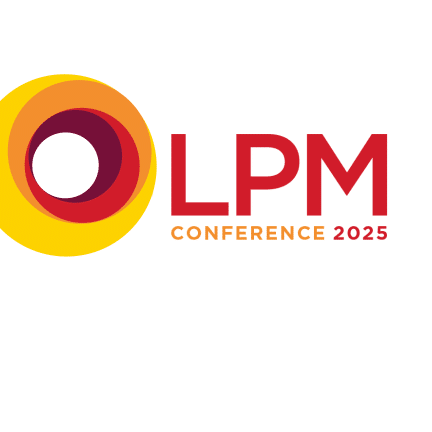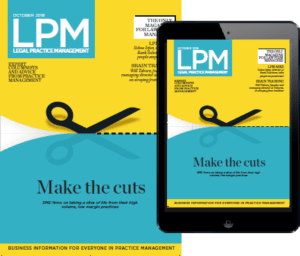
Adapting your marketing strategy for success post-pandemic
Gary Shaw, director at Accesspoint, says this new era of marketing is going at full speed ahead – is your firm fully prepared for the ride post-pandemic, and ready to adapt with the future in mind?
Marketing is a wide function that plays an integral part in every industry, especially within the legal sector as it can truly help a firm in the pool of competition stand out and gain new clients.
It’s forever evolving. New methods have emerged in the world of marketing, and it’s no longer the straight cut format of word-of-mouth referrals that will get you business. And nice colour pallets and fun taglines, won’t either. Today, marketing has seen a much more client-centric and tech-savvy approach, and, as a result, a wide range of opportunities follow for SME firms that are ready to utilise it. This new era of marketing is going at full speed and, by the looks of it, will not be slowing down anytime soon – so is your firm fully prepared for the ride and ready to adapt with the future ahead?
Having a solid idea of what your firm wants to achieve from your marketing strategy is key, as this then ensures that the correct action and tactics are taken to increase your chances of successful marketing campaigns.
So where should you start?
First, begin with your primary goal – build brand awareness and maintain a good brand image. There are many ways to achieve this, the most common method being by using SEO and PPC strategies to make your website more visible. But have you thought about what your firm will do next after it has implemented a strong SEO strategy and gained more visitors? Take a moment to imagine how efficient your marketing could be if it were joined up to your PMS and linked to your website – the possibilities could be endless, but, more importantly, it’s entirely possible.
Leading potential clients to your site is one thing but understanding what to do with them once they arrive is another, it’s important to remember that each client who visits your site can offer a wealth of valuable insights into future trends and direct marketing. With new and innovative website integrations and data-driven forensic integrations, your firm can now instantly tackle the ongoing issue of not knowing where your investment is going. You can do so by tracing inbound leads and their source of acquisition all the while measuring the volume and ultimate conversion rate together with the final case billed value, providing you with full ROI insight.
Additionally, once the client is within your reach, the data acquired will give you a better idea of knowing what your client clicks on and genuinely shows an interest in – allowing your firm to strike while the iron is hot and have a better chance to cross-sell different services without missing any opportunities. This can all be tracked and automated to your PMS.
Second, your brand image should not be forgotten, even when it comes to the daily video calls that we have all grown accustomed to. With the rise in home working, many of us have tried our best to create an office-like environment, and it has become the norm to see people in their everyday surroundings – and, to an extent, it has become part of the authentic life of remote working.
However, it has also provided an environment for potentially unprofessional settings and ‘background mishaps’ to take place. A newfound need for custom branded corporate backgrounds has emerged, and it would be a shame for your firm to miss out on the subtle yet effective marketing advantage this could bring.
After all, when an important client or hot lead enters your office for a meeting, your firm will ensure it is tidy and presentable to the outside world looking in. It’s just as important to ensure that your background during a video conference is just as clean and sleek. A high-quality corporate background not only brings the attention back to you and your firm, but it also provides your team with the perfect opportunity to maintain appealing visual branding as well as undefeated professionalism.
Once your branding is complete, the next thing to consider is how to create a client-centric environment within your firm. A common problem faced in an SME firm is that clients often get less face time than they would ideally want, meaning they are left with unanswered questions, longer waiting times and just an overall sense of reduced customer service. This is usually a result of reduced capacity and ever-increasing workloads, which, despite the best efforts of the firm, is hard to avoid.
Although SME law firms are providing high-quality service regarding casework, it’s important not to compromise on dealing with client needs. This can be the difference between an unhappy or satisfied client. The legal world is beginning to explore how best to engage with clients, and as a result, have new and exciting choices on the horizon.
Client portals are now set to make a huge impact in not only the way firms operate with their daily workload but also how they will regularly engage with clients. An effective portal will facilitate quick and easy communication integrations such as Microsoft Teams to ensure there is always an open and secure line available between the client and the team to discuss details of the case, update matter details and send confidential documents.
Furthermore, a client portal is a great place to display other services your firm may have to offer so you will be able to fully leverage the cross-selling opportunities and branding possibilities available – instantly giving your firm the upper hand in providing sleek, modern and essential facilities to clients.
SME law firms have a lot to look forward to. The increase in technology within the marketing world has made reaching a wider audience and gaining valuable insights more accessible for everyone. Consider exploring the market and its providers now to gain a head start.

How can SME law firms leverage data-driven marketing?
Gary Shaw, commercial group director at Accesspoint, says once you’re able to determine where your prospects are coming from and what drives your target audience in their decision-making process, you’ll be able to tip the odds in your favour.
Understandably, the challenge for many SME firms throughout this pandemic has been survival. As the most recent lockdown slowly comes to an end and life begins to look more stable for the near future, perhaps now is the time to push the boundaries and establish new and exciting ways to build your firm’s existing and new client base – as well as enhance awareness for other legal services your firm may offer.
The legal industry is possibly going through the biggest digital transformation ever, and it’s becoming ever more apparent that standing out online is now harder than ever as competition strengthens.
New joined-up technology that focuses on client expectations continues to make waves through some of the more forward-thinking firms, and the traditional marketing methods we have all grown accustomed to are rapidly becoming less effective as standalone techniques to attract new business. At just a click of a button, clients need to be convinced to choose you against others, so ensuring your firm’s website has been equipped with client-centric features is pivotal.
It’s worth re-thinking what client engagement means to your firm. Asking the right kind of questions can be the key to unlocking a strategic and effective marketing plan as well as opening a world of opportunities.
The first question to consider is, how much do you know about your target audience?
It’s important to remember that your target audience is forever evolving, so obtaining crucial ongoing demographic data about these people at any given time is a must. How can this realistically be done?
To discover more insightful information about your clients, adopting data-driven website automation is a great place to start. This online solution will enable your firm to collect almost any data you need to help with workflows in the most efficient and secure way. It’s hugely beneficial to be tracking clients from the very start of their digital journey, be that from clicking on Google adverts, Facebook posts, or other links, right up to the completion of their case and fees earned. This ensures that you’re accurately reporting your return on investment by cross referencing the cost of acquisition. This not only allows your firm to avoid the mistake of blindly throwing money at every marketing channel in an attempt to find the most effective lead generator, but it can also provide your firm with high quality information to make your marketing investments go further.
Now, the next thing you may ask yourself is what can I do with this data?
Once you’re able to determine where your prospects are coming from and what drives your target audience in their decision-making process, you’ll be able to tip the odds in your favour. This can be done through various ways such as investing in tried and tested marketing channels and maximising cross-selling opportunities so that other services your firm may offer can be on full display and marketed to people who are likely to appreciate it – instantly creating a fast and easy stream of extra revenue. Think about the possibilities of creating a targeted marketing campaign for visitors on your website by automatically sending an e-shot to any person who visits a page on your site. By communicating the services that visitors show a clear interest in, or on other products that may appeal to them, your firm will always be able to strike while the iron is hot and maximise any sales opportunity.
Another great way to improve cross-selling opportunities in the future could be through targeting your existing clients in a more personal way by interacting via client portals. Simply posting any adverts, infographics or announcements to your portal for clients to see and possibly follow up on will allow your firm to deepen the already established relationship with the client. Data-driven marketing is now the norm and the future for all law firms across the globe.

PMS tech decoded: ISO 27001 and why it’s important for modern law firms

Multiple systems, exponential problems
Most Popular

Where are the challenges for SME law firm leadership changing?

The leading annual picture of SME law firms' changing strategic priorities
TA Triumph-Adler provides tailored support to meet compliance requirements

Law firms undertaking identity verification checks must register as an ASCP

Robust onboarding processes are fundamental to effective risk prevention

Osprey Approach's webinar explores the benefits of a digital-first approach

Crucial website strategy priorities to boost business for SME law firms
Gary Shaw, commercial group director at Accesspoint, on website strategy for SME law firms and top tips for leveraging your digital presence to grow your business.
The legal marketplace is certainly crowded right now and, with every firm offering a great service to clients, standing out is becoming increasingly hard – especially for SME firms. It’s been clear for all to see over the last year that just having a good website is no longer enough and that simple-yet-effective methods, such as word-of-mouth marketing, won’t give your firm the boost it needs to thrive in today’s legal industry on their own.
With the workplace moving into a ‘virtual office space’, your website should be a well-functioning, client-centred and effective tool for finding opportunities and winning new clients, and should also provide a high-quality, joined-up approach to work. The big question is: where does your firm start?
Digital first impressions count
Firstly, the overall look of your website is very important and it needs to represent your brand, communicating what your firm is about. Then, it also needs to capture the attention – instantly. Think about how your site could be aesthetically pleasing without being cluttered and also incorporate colours and images that reflect your overall brand and way of thinking.
Furthermore, the functionality of your website is just as crucial. We often see SME firms shy away from the many possibilities an innovative, modern-day website could offer, and they instead opt for a traditional and sometimes outdated website layout, which acts merely as a ‘shop window’ for clients.
This could perhaps be a result of having a static, rigid website template, which is usually much harder to customise on-the-go and adapt in future. An effective website should have a flexible template that can be moulded to suit current market demands and host the various integrations clients expect, providing them with a seamless online experience – from fast payments to quick responses.
Put process at the heart of your digital lead generation machine
Once an adaptable template is in place, we encourage firms to establish new ways to maximise marketing opportunities and minimise the time spent on manually following up on website leads. Effective web forms and tracking software that take a joined-up approach to your workflow and that can optimise cross-selling opportunities should instantly be integrated to your site.
For example: forensic tools are currently available which allow your firm to monitor and track the digital journey of a client, from clicking on a Google advert or Facebook post right through to the completion of their case – providing your firm with valuable insights and demographic data that can all be delivered straight into your practice management system.
Additionally, incorporating web forms into your site will allow you to quickly follow up potential leads and effectively establish contact with them remotely. Try exploring different integrations that allow you to engage with visitors immediately, as this could increase the chance of turning prospects into clients.
Drive traffic to your law firm’s virtual door
It’s also crucial for SME firms not to overlook the power of effective SEO. Without it, any resources and costs going into your website will become void if no one is able to find it. A mistake commonly made by firms is assuming that, because your website is full of content, it should automatically rank highly on search engines.
It’s not wrong to think content helps, but merely adding any old thing to a webpage and hoping it generates traffic is a recipe for disaster. Your SEO strategy must be well thought-out and possibly worked on by a legal marketing specialist, as many search engines are configured to detect websites that just house lots of keywords without any meaningful content. When content takes an authoritative stance and proves that the owner knows what they’re talking about, it demonstrates true value to the person searching and can help take your site up in the search rankings.
Make sure your site is always working in your favour: not only should the content on every page be high quality, but it should also appeal to the lowest common denominator by using common, everyday language. Avoid using complex words and legal jargon that only lawyers can understand and find a balance between showing your expertise and appealing to your wider audience. If the content on your website is not clear, concise and effective, it’s likely you won’t be getting your message across and visitors who do land on your page will quickly lose interest.
On this new marketing journey for the legal industry, SME firms can no longer afford to take a back seat. Perhaps now is the time to think ahead and consider exploring new and innovative marketing ideas.

PMS tech decoded: ISO 27001 and why it’s important for modern law firms

Multiple systems, exponential problems
Most Popular

Where are the challenges for SME law firm leadership changing?

The leading annual picture of SME law firms' changing strategic priorities
TA Triumph-Adler provides tailored support to meet compliance requirements

Law firms undertaking identity verification checks must register as an ASCP

Robust onboarding processes are fundamental to effective risk prevention

Osprey Approach's webinar explores the benefits of a digital-first approach




